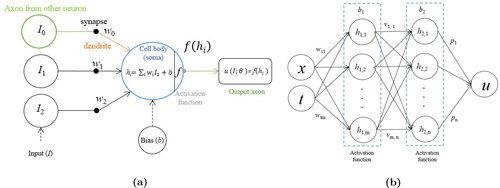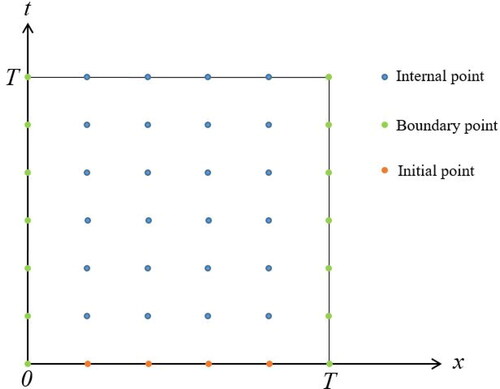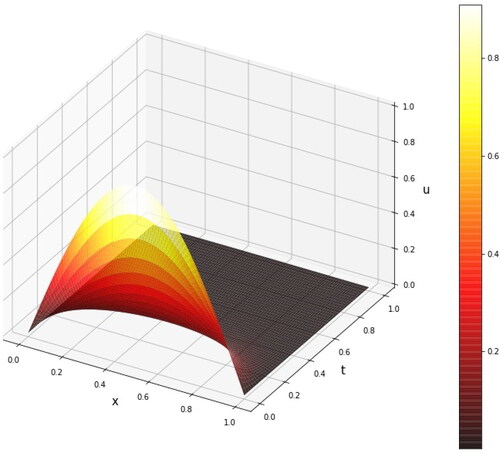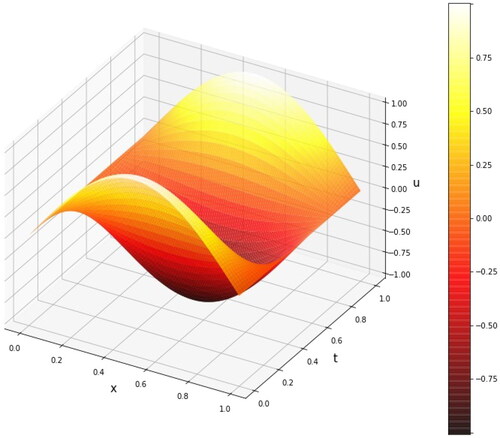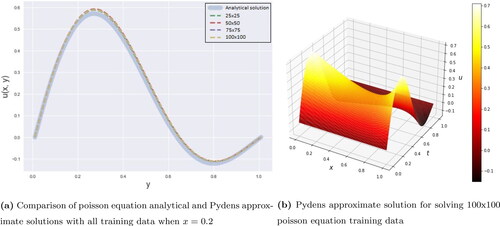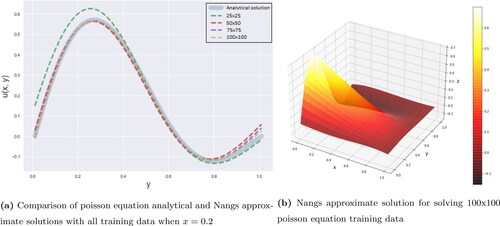Figures & data
Table 1. The performance of PyDens, NeuroDiffeq and Nangs methods for solving PDE heat equation.
Figure 4. Comparison analytical and approximate solutions of PDE heat equation by using Pydens method.
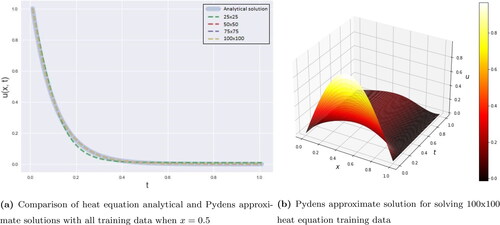
Figure 5. Comparison analytical and approximate solutions of PDE heat equation by using NeuroDiffeq method.

Figure 6. Comparison analytical and approximate solutions of PDE heat equation by using Nangs method.
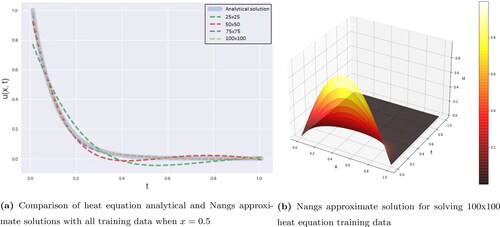
Figure 7. Comparisons of the loss values and the computational times between the ANN-based methods for solving heat equation at all training points.
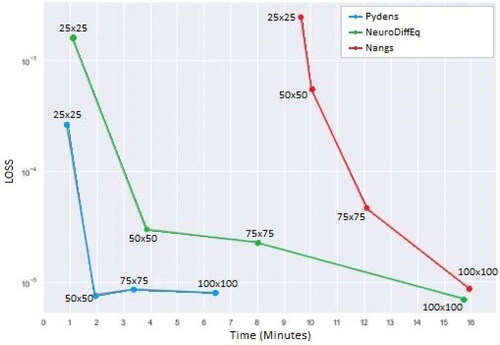
Table 2. The loss values of PDE Heat simulation for different number of layers and neurons.
Table 3. The performance of the three methods for solving PDE wave equation.
Figure 9. Comparison analytical and approximate solutions of PDE wave equation by using Pydens method.
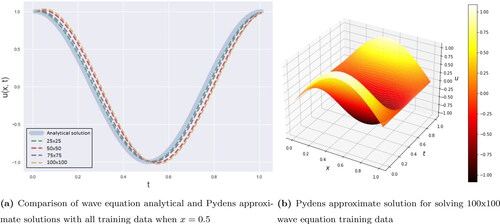
Figure 10. Comparison analytical and approximate solutions of PDE wave equation by using NeuroDiffeq method.

Figure 11. Comparison analytical and approximate solutions of PDE wave equation by using Nangs method.
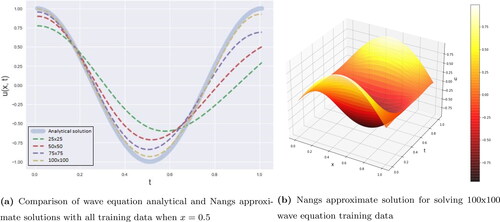
Figure 12. Comparisons of the loss values and the computational times between the ANN-based methods for solving wave equation at all training points.
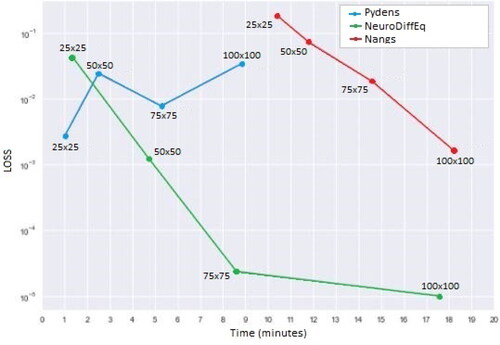
Table 4. Wave simulation results with different number of layers and neurons.
Table 5. The performance of the three methods for solving Poisson equation.
Figure 15. Comparison analytical and approximate solutions of PDE Poisson by using NeuroDiffeq method.
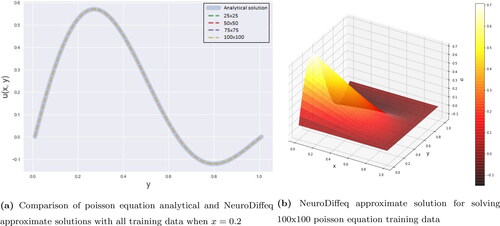
Figure 17. Comparisons of the loss values and the computational times between the ANN-based methods for solving Poisson equation at all training points.
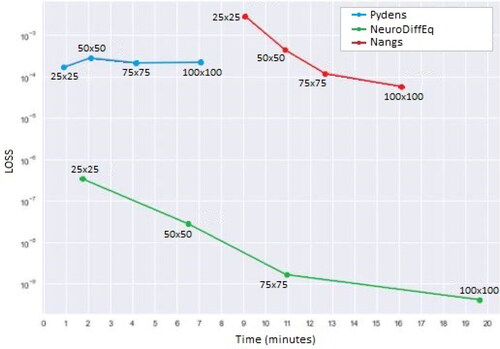
Table 6. Poisson simulation results with different number of layers and neurons.
Data availability statement
Not applicable.

